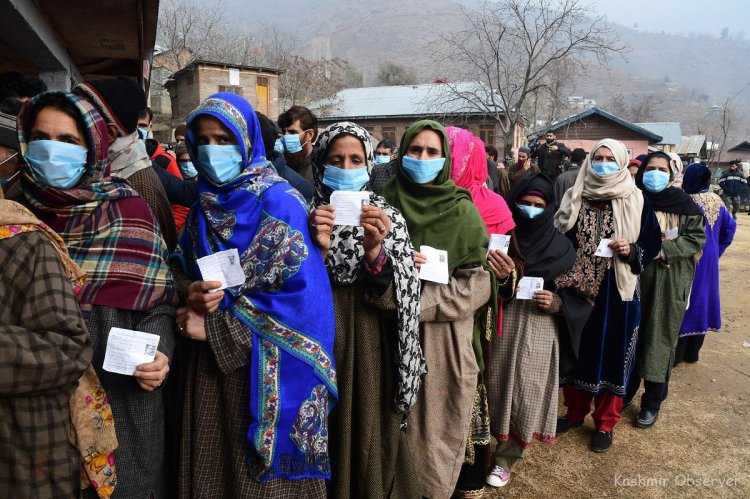Jammu and Kashmir: Local Bodies, Assembly Polls Likely as Militancy Character Changes
Asia News Agency

The five year term of 4,892 elected urban and village ‘panchayats’ (local bodies in towns, cities and rural areas), the traditional grassroots-level elected representatives, came to an end Tuesday. A new governance structure — District Development Councils (DDCs), elected directly by people — however, continues to be in place since the standalone elections held in 2020.
DDCs only connection between government and people: Members of DDCs, a new layer of elected representatives in J&K, writes The Indian Express “are the only connection between the J&K government and people now. But they cannot replace panchayat members, councillors or MLAs in their functions.”
It is understood that elections to urban local bodies and ‘panchayats’ are unlikely before the Lok Sabha elections. Further, elections to the Jammu and Kashmir Assembly need not be held along with the Lok Sabha polls, according to sources said, citing the Supreme Court deadline of September 2024 for the same while delivering its judgment on the Constitutional validity of the J&K Reorganisation Act, 2019. The last Assembly elections in J&K, were held in 2014.
Militancy scenarios: shift is in modus operandi and geography
Meanwhile, there are significant but subtle changes happening in the militancy scenario of Jammu and Kashmir over the past couple of years. But there has not been much public discussion on this.
“The shift is in modus operandi and geography,” writes Manvendra Singh (Congress leader, Editor-in-Chief of Defence & Security Alert and Chairman, Soldier Welfare Advisory Committee, Rajasthan). “The centre of gravity has now moved south of the Pir Panjal, after two decades. And the changing pattern of militant actions suggests that the goal is shock value rather than just continuous pinpricks. These produce sharp ambushes with disproportionate psychological results.”
Operation Sarp Vinash: The lesson for counter-terrorism strategy “lies in the past — in how the Army mounted Operation Sarp Vinash.
“The south of the Pir Panjal area was once an equally active militancy zone when excessive pressure in the Kashmir Valley forced Pakistan-based militant groups to set up bases in Poonch and Rajouri districts of Jammu division. Hill Kaka, where the militants had dug in during the early part of 2003, became the de facto headquarters of Terror Inc. The Army was then compelled to launch its biggest pincer movement in counter-insurgency operations after frequent attacks on security forces, along with exploitation of the local population. Named Op Sarp Vinash….the multi-formation action resulted in a large number of terrorists killed in both districts……
“The success of Op Sarp Vinash lay largely due to the fact that the complex multi-formation dual-service action was the culmination of a carefully planned encirclement operation that had a single strategic objective — elimination of militants from the sector. There was no scope or planning for esoteric objectives like securing political and administrative space or winning the hearts and minds. And elimination was completed with the deft use of Infantry, Special Forces, and armed helicopters. Manpower and technology were used in a simple and logical manner, which stemmed entirely from the intellectual and military acumen of then-formation commander.”
Op Sarp Vinash, states Singh “succeeded in ushering in more than a decade of relative peace in the two affected districts….”
The lesson: The most important lesson “is for the Army to determine the timing and tactics of its operations by its own accord and acumen, not by any other external considerations. Slow, deliberate and painstakingly prepared actions are far better than rushing troops for the sake of quick results and then paying the highest price as happened last May. Since then, the Army has been losing soldiers at an abnormally regular pace, from largely similar ambushes. And all within the districts of Rajouri, Poonch and parts of Reasi. The terrain isn’t easy, but then it wasn’t in 2003 either, with resources readily available.”
















